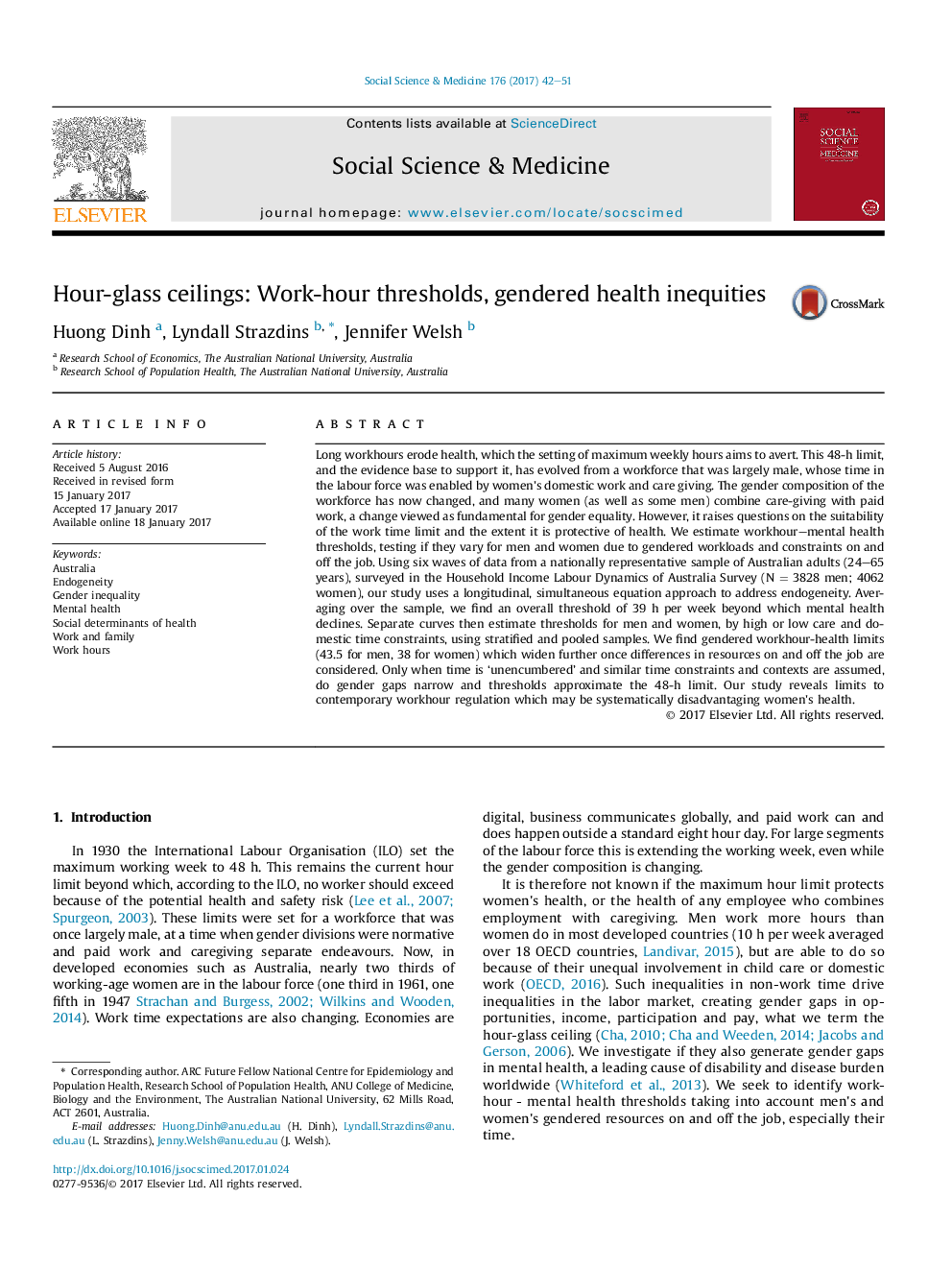| کد مقاله | کد نشریه | سال انتشار | مقاله انگلیسی | نسخه تمام متن |
|---|---|---|---|---|
| 5046745 | 1475993 | 2017 | 10 صفحه PDF | دانلود رایگان |
- Workhours are not uniformly bad for mental health but have a distinct tipping point.
- Because women's time is constrained they have lower workhour-health thresholds.
- Current work hour regulations and expectations are disadvantaging women's health.
- For men and women to equally share care, workhour limits will need to be lowered.
Long workhours erode health, which the setting of maximum weekly hours aims to avert. This 48-h limit, and the evidence base to support it, has evolved from a workforce that was largely male, whose time in the labour force was enabled by women's domestic work and care giving. The gender composition of the workforce has now changed, and many women (as well as some men) combine care-giving with paid work, a change viewed as fundamental for gender equality. However, it raises questions on the suitability of the work time limit and the extent it is protective of health. We estimate workhour-mental health thresholds, testing if they vary for men and women due to gendered workloads and constraints on and off the job. Using six waves of data from a nationally representative sample of Australian adults (24-65 years), surveyed in the Household Income Labour Dynamics of Australia Survey (NÂ =Â 3828 men; 4062 women), our study uses a longitudinal, simultaneous equation approach to address endogeneity. Averaging over the sample, we find an overall threshold of 39Â h per week beyond which mental health declines. Separate curves then estimate thresholds for men and women, by high or low care and domestic time constraints, using stratified and pooled samples. We find gendered workhour-health limits (43.5 for men, 38 for women) which widen further once differences in resources on and off the job are considered. Only when time is 'unencumbered' and similar time constraints and contexts are assumed, do gender gaps narrow and thresholds approximate the 48-h limit. Our study reveals limits to contemporary workhour regulation which may be systematically disadvantaging women's health.
Journal: Social Science & Medicine - Volume 176, March 2017, Pages 42-51
